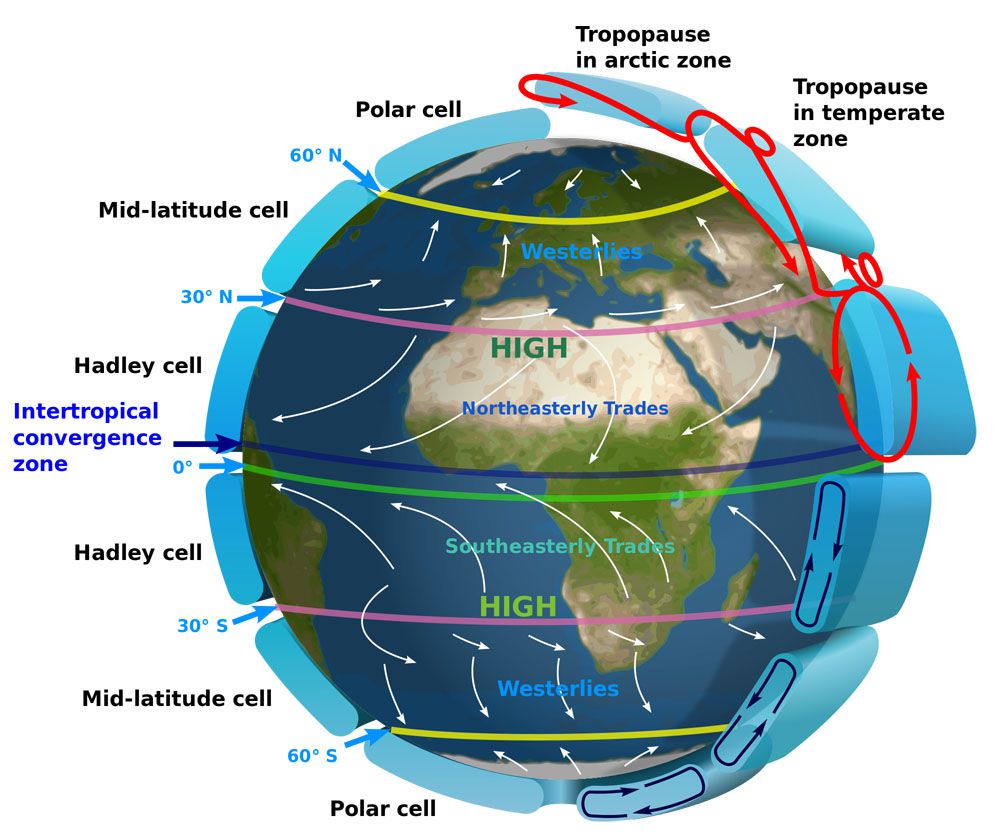Assignment 7 - Answer Key
Directions: Please answer the following questions. Where you are asked why, be as complete as possible when answering.
1. What happens to relative humidity when the water vapor content of the air remains the same, but the temperature decreases? The Relative Humidity increases as the temperature decreases (and Relative Humidity decreases as temperature increases)
Why?
This is because as air temperature decreases it requires less moisture to become saturated. Water vapor molecules slow down as the air cools and are more likely to collide, stick to condensation nuclei and each other.
2. Based on what you know about relative humidity, what time of the day are plants most likely to wilt if not watered?
Pick an hour and specify am or pm (the correct answer will fall into a range)
Between 3 pm and 5 pm. Plants wilt when relative humidity is low. Relative Humidity drops as the temperature rises. While the sun may be at its highest at solar noon, the temperature lags behind. By about 3 pm the temperature is highest
3. Which type of fog is most common in Santa Rosa in the Summer and how does it form?
Advection Fog. Advection Fog forms when warm air blowing across the Pacific encounters the very cold, California current. The temperature of the air in contact with the Ocean cools to dew point, condenses and creates fog which is carried to shore and is our summer fog.
4. Which type of fog is most common in Winter in Santa Rosa, and how does it form?
Radiation Fog. On cold still winter nights the air directly in contact with the cold surface cools to dew point, condenses and fog forms. In the morning as the sun comes up it warms the air, the fog lifts off the ground and eventually dissapates.
5. If a container of air at 60°F with relative humidity of 50% is cooled to 40°F, will the relative humidity increase, decrease or stay the same?
Increase. Same as question 1 .... when the air cools the Relative Humidity rises.
6. I recommend that you draw yourself a diagram of a mountain to help you answer this question.
Suppose an air mass with an initial temperature of 60°F is forced to rise over an 8,000 foot mountain. The dew point temperature is 38°F. Assume a dry adiabatic lapse rate of -5.5°F/1000 ft and a wet adiabatic lapse rate of -3.3°F/1000 ft.
Answer the following questions:
- At what elevation does the relative humidity reach 100%? 4000 feet
- What is the temperature of the air at the top of the mountain (at 8,000 feet)? 24.8°F
- What is the temperature of the air after it descends to sea level on the lee side of the mountain? 68.8°F
Initial Temperature of the air rising: 60°F
Dew Point Temperature: 38°F
Elevation of mountain: 8000 feet
Steps to answering question:
1) 60 -38 = 22
Subtract the dew point temp from the initial air temp to calculate how many degrees the air has to cool to get to dew point or 100% RH
2) 22 ÷ 5.5 = 4 (which is 4000 feet).
Divide the number of degrees the air must cool to get to dew point by the adiabatic lapse rate of 5.5. This gives the number of 1000 feet the air must rise to cool to get to the dew point temp - our first answer.
3) 4 x 3.3 = 13.2
The air must rise 4000 more feet to get to the top of our 8000 mountain (if it were a 10,000 ft mountain you'd multiply by 6 instead). We now use the wet adiabatic lapse rate of -3.3°/1000 feet because once we hit dew point condensation occurs and warms the air a bit. So the air still cools as it rises but it cools more slowly.
4) 38 - 13.2 = 24.8°F at the top of the mountain
To find this answer, you subtract the dew point temperature from the number of degrees that the air will cool from there to the top of the mountain. Its likely to be snowing up there.
5) 5.5 x 8 = 44
The air will descend down the lee side of the mountain. Descending air is being compressed and warming. It always warms at the dry adiabatic lapse rate of +5.5F/1000 ft. Its an 8000 foot mountain so 8 x 5.5
6) 44 + 24.8 = 68.8°F at the bottom of the lee side of the mountain
So to get our final answer, we know that the air warms 44 degrees as it descends. It was 24.6 degrees at the top of the mountain so we add them together an find the temperature.
7. Fill in the blanks
The prevailing wind direction for a mountain located at 38°S is ___West___. The dry side of the mountain is which side__ East____. (north, south, east or west)
The prevailing wind direction for an island at 22° N is __North East___. The wet side of the island is which side East .(north, south, east or west)
Here's a little reminder:

8. Using the map below and what you have learned in lectures, which is the "driest continent" and which is the "wettest continent".
Wettest Continent: South America
Driest Continent: Antarctica or you could have chosen Australia given the map
Global Annual Average Precipitation (Links to an external site.)